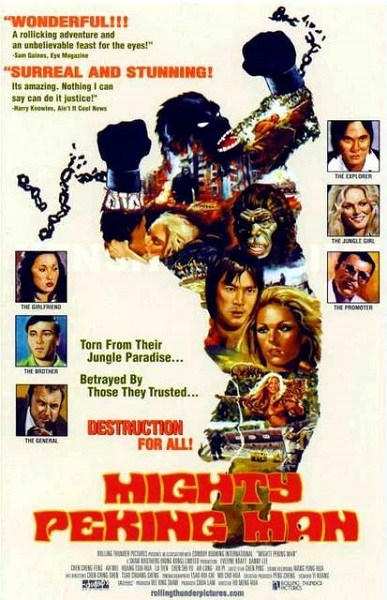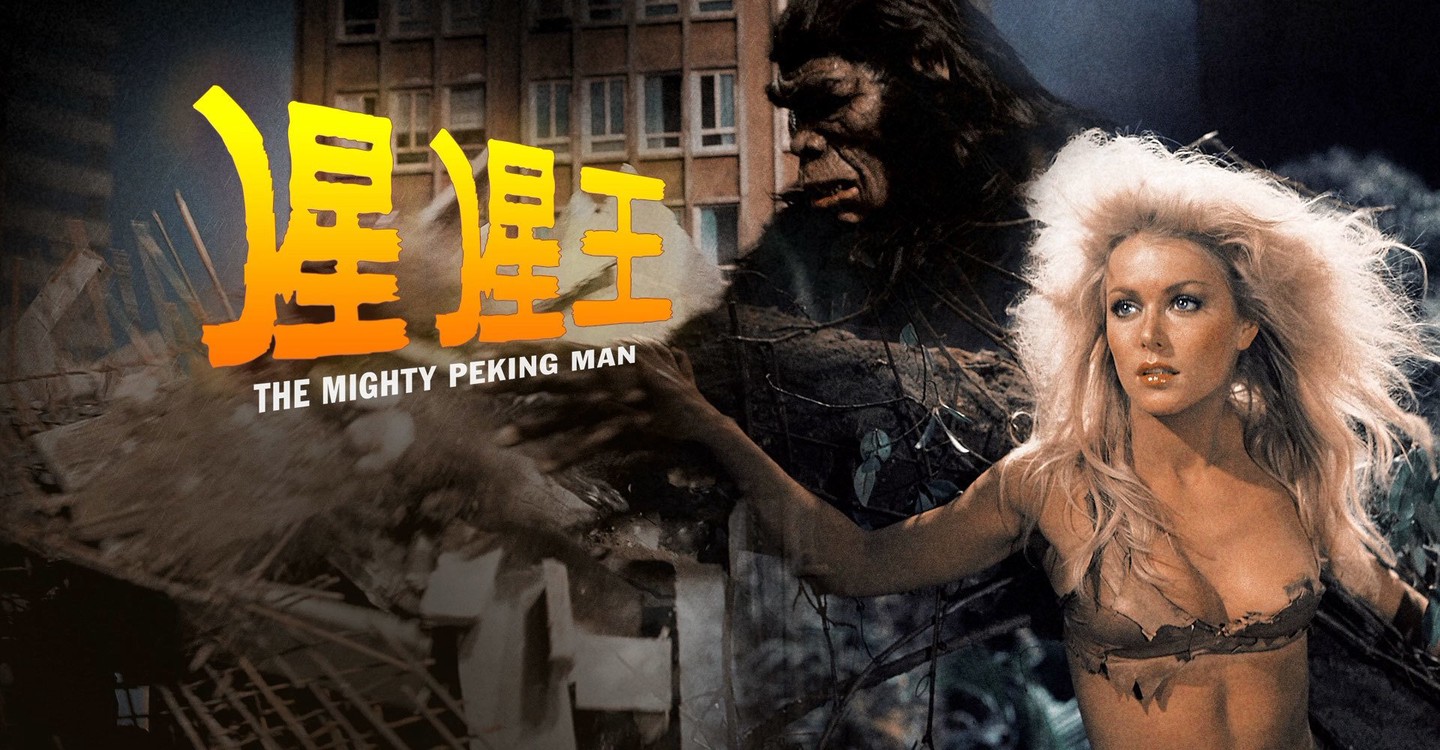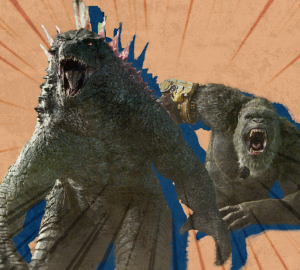Meet Hong Kong’s King Kong: ‘Mighty Peking Man’
It's no Eighth Wonder of the World, but there's still fun to be had with 'Mighty Peking Man'

Our Halloween cult monster movie marathon continues with the 1977 “Mighty Peking Man.” Our story focuses on a small crew, led by the heartbroken Johnnie, who venture into the wild to locate and capture a legendary Himalayan ape like beast known as Mighty Peking Man. It is only after being abandoned by his crew, that he comes across both the monster and a scantily dressed wild girl named Samantha — who was orphaned and raised by the Peking Man. Soon after getting into a relationship, the two decide to take the monstrous ape back to Hong Kong to be shown to the world. As can be predicated, things don’t go to well as a result.
It’s hard to hide that this film is a straight up ripoff of “King Kong.” This was due in part to the original 1933 “King Kong” gaining popularity once again during the 1970s (likely due to long thought lost scenes being inserted back into the film and being rereleased) as well as a highly publicized and successful remake of the film coming out in 1976.
 At this time, “King Kong” ripoffs were practically around every corner. From “Queen Kong” to “Konga” to “Ape” (also known as “Attack of the Giant Horny Gorilla”), there was no shortage of studios trying to get into the monkey madness. Out of all the atrocious ripoffs, however, “Mighty Peking Man” has always stood out as the most beloved. Such film giants as Roger Ebert and Quentin Tarantino (who rereleased the film under his company’s name) have been admitted fans. But, is it for good reason?
At this time, “King Kong” ripoffs were practically around every corner. From “Queen Kong” to “Konga” to “Ape” (also known as “Attack of the Giant Horny Gorilla”), there was no shortage of studios trying to get into the monkey madness. Out of all the atrocious ripoffs, however, “Mighty Peking Man” has always stood out as the most beloved. Such film giants as Roger Ebert and Quentin Tarantino (who rereleased the film under his company’s name) have been admitted fans. But, is it for good reason?
There’s no denying that, while it certainly takes from “King Kong,” there is a definite charm this film exudes all on its own. Being made in the East, this film employs many of the same men-in-suit techniques that Japan does for their monster films, with mixed results. The miniature sets are surprisingly well made and shot, but the ape suit, while far from the worst, leaves much to be desired. Often feeling static in its expressions, the film constantly will cut to a close up of a separate mask that is far too expressive that always feels jarring. The rest of the awkward filmmaking adds to the cheese factor, with some wonky editing, hilariously corny sound design and weird dubbing.
The film’s story dedicates a surprising amount of time to develop its human characters, particularly Johnnie. This acts as a double edged sword for the film. While it is nice to see a monster movie that does give time to its human characters, it has a hard time balancing such moments with giving anything for the titular monster to do for a good chunk of the runtime.
Rather, the film lays on the cheese factor heavily with its ’70s aesthetic. One of the film’s more iconic moments, is a slow motion montage showing Johnnie and Samantha frolicking with (obviously trained) leopards and swimming in pools all set to a groovy love ballad. It’s times like these that, while entertaining, make you forget that you’re watching a giant ape movie.
That is until the film’s final 20 minutes. The climax of this film is, simply put, pure excellence. This is when the movie decides to embrace the fact that it is a fun monster movie while at the same time utilizing the now developed human cast to create some legit tension and drama. Also, without spoiling anything, if you thought the ending to “King Kong” was depressing, this movie makes it look like Disney’s “Cinderella” in comparison.
At the end, “Mighty Peking Man” may not have the feel of your typical schlocky monster flick, but it still delivers the goods. This cheesy ’70s joyride deserves its reputation as one of the most cherished ripoffs in film history. For those who enjoy Japanese giant monster or even classic Hong Kong kung fu movies, “Mighty Peking Man” is a mighty good choice.
Review overview
Summary
6.5Packed with cheesy '70s goodness along with some investing surprises, "Mighty Peking Man" makes for an entertaining watch.


























